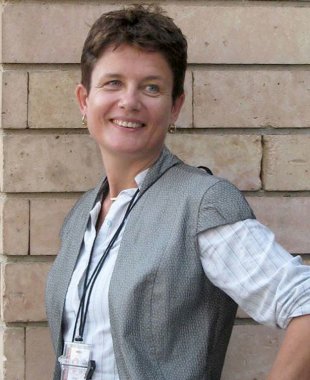Oct 23, 2015
KAΘΟΔΗΓΟΥΜΕΝΕΣ ΒΟΜΒΕΣ KAB 1500 ΔΙΕΛΥΣΑΝ ΣΤΟΧΟΥΣ ΤΗΣ ISIS - ΣΦΟΔΡΟΙ ΒΟΜΒΑΡΔΙΣΜΟΙ ΤΗ ΝΥΧΤΑ
350 ισλαμιστές σκοτώθηκαν σε Λαττάκεια και Χαλέπι καθώς έχουν περικυκλωθεί με αρκετούς να παραδίνονται αφού ο συριακός στρατός μαζί με την ρωσική αεροπορία έκοψε τις διόδους ανεφοδιασμού τους και τους σφυροκοπεί από έξι διαφορετικά σημεία ακόμη και κατά τη διάρκεια της νύχτας με Mil Mi 28, Su-24/25/34, TOS-1, BM-21 Grad.
Τα ρωσικά μαχητικά χρησιμοποιούν πλέον τις βόμβες υψηλής ακρίβειας ΚΑΒ 1500 προκειμένου να χτυπήσουν ενισχυμένους στόχους αρκετά μέτρα κάτω από τη γη ενώ δόθηκαν στον συριακό στρατό ιρανικά τζιπ Safir με 107 mm MRLS.
Eπιπλέον, η ρωσική αεροπορία έπληξε γέφυρα στον Ευφράτη ποταμό, κοντά στην πόλη της Συρίας Deir ez-Zor,με το πλήγμα να είναι «χειρουργικό» και «καίριο» ώστε να ανακοπεί ο ανεφοδιασμός του ISIS σε τρόφιμα και πολεμοφόδια.
Συγκεκριμένα, 45 ισλαμιστές σκοτώθηκαν στη Χάμα σύμφωνα με επίσημη ενημέρωση του συριακού Στρατού:
“Οι ένοπλες δυνάμεις μας συνέχισαν επιτυχώς την επέλαση τους υποστηριζόμενες από την ρωσική αεροπορία” είπε ο Στρατηγός Ali Maikhoub.
Το ISIS μας επιτέθηκε στην πόλη Umm Hadij, αλλά τους απωθήσαμε με συνέπεια 45 τρομοκράτες να σκοτωθούν και να καταστραφούν 23 οχήματα τους”.
Στη Λαττάκεια 300 ισλαμιστές σκοτώθηκαν είπε ο Maikhoub.
“Ο στρατός μας ελέγχει την Jub al-Ahmar και μέρος της Salma και την Kafr Obeid και τα περίχωρα του Blas στο Χαλέπι” πρόσθεσε.
Ο συριακός στρατός ελέγχει πλήρως την περιοχή Majbal στη Χαράστα ενώ σφυροκοπεί τους ισλαμιστές με πυροβολικό στην ανατολική Ghouta.
Την Παρασκευή το πρωί ο συριακός Στρατός και οι “Δυνάμεις Τσιτάχ” μαζί με τις NDF και τις δυνάμεις Kataebat Al-Ba’ath συνέχισαν την μεγάλη αντεπίθεση στο Deir Hafer ανατολικά του Χαλεπίου και κατέλαβαν δύο σημαντικά χωριά από το ISIS.
Σφοδρή ήταν η αντεπίθεση στη Jabboul καθώς οι κυβερνητικές δυνάμεις κατέλαβαν αυτή την στρατηγική πόλη. Επόμενος στόχος είναι η πόλη Judaydeh, με τις μάχες με τους ισλαμιστές του ISIS ήδη να έχουν ξεκινήσει.
Με τις Judaydeh και Jabboul να είναι υπό τον έλεγχο του συριακού Στρατού, 40 ακόμη χλμ κατελήφθησαν στην πεδιάδα Deir Hafer ανατολικά του Χαλεπίου όπου το ISIS υποχωρεί προς τη Ράκκα ενώ 4 μόνο χλμ χωρίζουν τις συριακές και ρωσικές δυνάμεις από το στρατιωτικό αεροδρόμιο του Kuweires το οποίο είναι υπό τον έλεγχο του ISIS εδώ και δύο χρόνια.
Ισλαμιστές της Jaysh al-Islam σκοτώθηκαν από τον συριακό Στρατό στη Χαράστα, άλλοι παραδόθηκαν ενώ σκοτώθηκαν και δύο διοικητές των τζιχαντιστικών οργανώσεων ανάμεσα τους και ο περιβόητος “Mohammad al-Khatib”.
Δείτε εικόνες τους.




350 ισλαμιστές σκοτώθηκαν σε Λαττάκεια και Χαλέπι καθώς έχουν περικυκλωθεί με αρκετούς να παραδίνονται αφού ο συριακός στρατός μαζί με την ρωσική αεροπορία έκοψε τις διόδους ανεφοδιασμού τους και τους σφυροκοπεί από έξι διαφορετικά σημεία ακόμη και κατά τη διάρκεια της νύχτας με Mil Mi 28, Su-24/25/34, TOS-1, BM-21 Grad.
Τα ρωσικά μαχητικά χρησιμοποιούν πλέον τις βόμβες υψηλής ακρίβειας ΚΑΒ 1500 προκειμένου να χτυπήσουν ενισχυμένους στόχους αρκετά μέτρα κάτω από τη γη ενώ δόθηκαν στον συριακό στρατό ιρανικά τζιπ Safir με 107 mm MRLS.
Eπιπλέον, η ρωσική αεροπορία έπληξε γέφυρα στον Ευφράτη ποταμό, κοντά στην πόλη της Συρίας Deir ez-Zor,με το πλήγμα να είναι «χειρουργικό» και «καίριο» ώστε να ανακοπεί ο ανεφοδιασμός του ISIS σε τρόφιμα και πολεμοφόδια.
Συγκεκριμένα, 45 ισλαμιστές σκοτώθηκαν στη Χάμα σύμφωνα με επίσημη ενημέρωση του συριακού Στρατού:
“Οι ένοπλες δυνάμεις μας συνέχισαν επιτυχώς την επέλαση τους υποστηριζόμενες από την ρωσική αεροπορία” είπε ο Στρατηγός Ali Maikhoub.
Το ISIS μας επιτέθηκε στην πόλη Umm Hadij, αλλά τους απωθήσαμε με συνέπεια 45 τρομοκράτες να σκοτωθούν και να καταστραφούν 23 οχήματα τους”.
Στη Λαττάκεια 300 ισλαμιστές σκοτώθηκαν είπε ο Maikhoub.
“Ο στρατός μας ελέγχει την Jub al-Ahmar και μέρος της Salma και την Kafr Obeid και τα περίχωρα του Blas στο Χαλέπι” πρόσθεσε.
Ο συριακός στρατός ελέγχει πλήρως την περιοχή Majbal στη Χαράστα ενώ σφυροκοπεί τους ισλαμιστές με πυροβολικό στην ανατολική Ghouta.
Την Παρασκευή το πρωί ο συριακός Στρατός και οι “Δυνάμεις Τσιτάχ” μαζί με τις NDF και τις δυνάμεις Kataebat Al-Ba’ath συνέχισαν την μεγάλη αντεπίθεση στο Deir Hafer ανατολικά του Χαλεπίου και κατέλαβαν δύο σημαντικά χωριά από το ISIS.
Σφοδρή ήταν η αντεπίθεση στη Jabboul καθώς οι κυβερνητικές δυνάμεις κατέλαβαν αυτή την στρατηγική πόλη. Επόμενος στόχος είναι η πόλη Judaydeh, με τις μάχες με τους ισλαμιστές του ISIS ήδη να έχουν ξεκινήσει.
Με τις Judaydeh και Jabboul να είναι υπό τον έλεγχο του συριακού Στρατού, 40 ακόμη χλμ κατελήφθησαν στην πεδιάδα Deir Hafer ανατολικά του Χαλεπίου όπου το ISIS υποχωρεί προς τη Ράκκα ενώ 4 μόνο χλμ χωρίζουν τις συριακές και ρωσικές δυνάμεις από το στρατιωτικό αεροδρόμιο του Kuweires το οποίο είναι υπό τον έλεγχο του ISIS εδώ και δύο χρόνια.
Ισλαμιστές της Jaysh al-Islam σκοτώθηκαν από τον συριακό Στρατό στη Χαράστα, άλλοι παραδόθηκαν ενώ σκοτώθηκαν και δύο διοικητές των τζιχαντιστικών οργανώσεων ανάμεσα τους και ο περιβόητος “Mohammad al-Khatib”.
Δείτε εικόνες τους.








